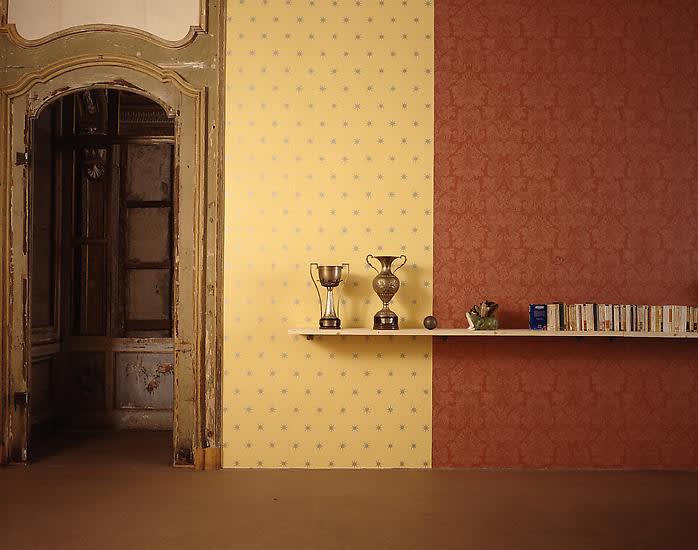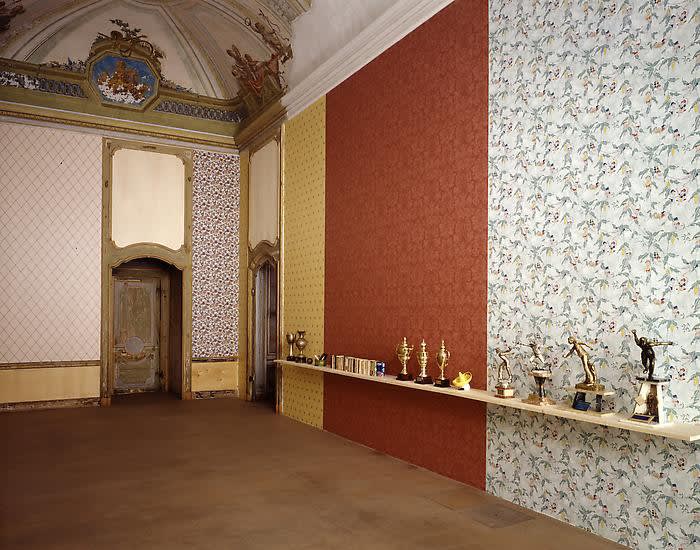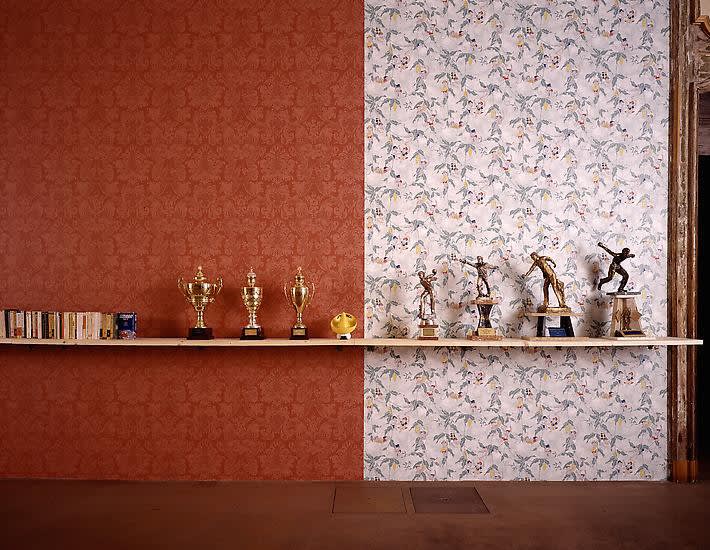I don’t make objects, I find and present them,” Haim Steinbach has said. The ritual aspect of presentation as an act of display is a constant element in the poetics of this artist, who, during the 1980s, developed a series of works in which objects taken from daily life are exhibited on shelves attached to the wall. Steinbach has made the choice to present objects in heterogeneous juxtapositions, based on their different social and cultural attributes, in order to underscore the condition of exhibition value in the everyday play with objects. Acting as an archaeologist of the contemporary, Steinbach not only exhibits pre-selected objects, revealing their phenomenological features, but also stresses the affective component, which makes the object an essential element in the construction of personal identity.
Steinbach’s works are presented in specific relationship with the exhibition environment, sometimes reflecting its particular characteristics, sometimes acting as conceptual interventions that contradict the space and its contents. On the occasion of his solo exhibition at the Castello di Rivoli in 1995, the artist produced La scala (The Ladder), 1995, a tall tower made from coarse wooden planks. Externally the work is characterized by a single doorway, cut to follow the contours of the Baroque doors of the Castello.
Internally, behind an antechamber with a niche that contains two miniature wells, a narrow labyrinthine corridor leads the way to a shaft located at the center of the tower, measuring approximately 40 inches by 276 inches. A ladder climbs its entire height towards an opening at the top, revealing the centerpoint of the vaulted ceiling of the space. With its narrow and tortuous corridor and vertical shaft and ladder, La scala is above all a reflection on architecture and the various desires and intentions that it mirrors. As a metonym for the Castello, the tower replays the dynamics of its image of power and subjugation. As in all Steinbach’s works, references to Minimalist strategies are present, such as the use of basic geometric forms, employed as building modules, with an emphasis on their structural as well as aesthetic values. Ideas of repetition and difference are evoked and contradicted by the two hand-made, vernacular wells, which are similar and yet different in their details. The well is presented as a constituent part of the Castello—a deep well was found during the restoration of the Castello and is still visible from a room on the first floor. As a structure that hides its interior, La scala can also be interpreted as a critique of the concept of the museum, which came into being as a place-container for works of art, but which ends up separating these works irremediably from the world.
In gelded eyes # 4, 1987–90, Steinbach brings together on a shelf masks, which refer to science-fiction and extraterrestrial mutations, with ceramic egg baskets in the Baroque tradition, representing fecundity and regeneration. As is often the case with Steinbach’s objects, the masks, clearly inspired by Hollywood films, and the eggs, Italian-made ceramics from Bassano, come from the artist’s meanderings through shops and workshops in the contemporary urban environment.
coat of arms, 1988, is a unique work that features a closet like structure containing a series of men’s suits by well-known designers together with four suit sculptures carved in wood by a Venetian artisan. The shelf supports a nineteenth-century French bronze sculpture of a man splitting a log, juxtaposed with four brass tubas. The archetype, metonymy, and seriality are some of the keys that Steinbach employs in this work, exposing the formal conventions and myths that dictate our social behavior.



